Installation of a Triple-Anchored Excavation Wall (FLAC2D)
Problem Statement
Note
The project file for this example is available to be viewed/run in FLAC2D.[1] The project’s main data files are shown at the end of this example.
The benchmark exercise described by Schweiger (2002) consisting of a deep excavation problem in Berlin sand is the base for this example application. The geometry, basic assumptions, and computational steps adopted for this example are taken from the benchmark exercise. The results for wall deflection and surface settlements are compared to measurements. The example shows the applicability of the Plastic-Hardening (PH) model for deep excavation problems.
A sketch of the problem conditions in the benchmark exercise is presented in Figure 1. The soil profile consists of two horizontal sand layers. The thickness of the top layer (Layer 1) is 20 m, and the bottom layer (Layer 2) extends to a 100 m depth below surface. The excavation is 60 m wide, and the final depth is 16.8 m. Plane strain conditions and half symmetry are used for the problem.
Several specifications taken from Schweiger (2002) are adopted for this example.
The influence of the diaphragm wall construction is neglected.
The diaphragm wall is modeled using zones (Young’s modulus = 30 GPa, Poisson’s ratio = 0.15, thickness = 0.8 m).
The horizontal hydraulic cutoff at a 30 m depth is not considered as structural support; the mechanical properties are assumed to be the same as for the surrounding soil.
The ratio of effective horizontal stress to effective vertical stress— adopting the default coefficient for normally consolidated material of \(K_{nc} = 1 - \sin{\phi}\)—is 0.43 for layer 1 and 0.38 for layer 2.
Hydrostatic water pressures, corresponding to water levels, hold inside and outside the excavation. Full groundwater lowering inside the excavation is performed before the excavation starts.
Anchors are modeled as cables, which are prestressed. The grouted part allows load transfer to the soil.
Figure 1: Geometry and excavation stages (after Schweiger, 2002).
The analysis described by Schweiger (2002) includes nine steps.
Stage 1 – |
Initialize stress state, including groundwater table, 3 m below soil surface. |
Stage 2 – |
Activate diaphragm wall and lower water level to −17.90 m in pit. |
Stage 3 – |
Excavation step 1 (to level −4.80 m). |
Stage 4 – |
Activate anchor row 1 at level −4.30 m and prestress anchors. |
Stage 5 – |
Excavation step 2 (to level −9.30 m). |
Stage 6 – |
Activate anchor row 2 at level −8.80 m and prestress anchors. |
Stage 7 – |
Excavation step 3 (to level −14.35 m). |
Stage 8 – |
Activate anchor row 3 at level −13.85 m and prestress anchors. |
Stage 9 – |
Excavation step 4 (to level −16.80 m). |
The zone profile and the structural elements are shown in Figure 1. The soil is modeled with the Plastic-Hardening model. The wall is model by the linear elastic zone elements. The anchors are modeled by cable structure elements.
Soil properties for the Berlin sand listed in Table 2 are adapted from Schweiger (2002).
Parameter |
Unit |
Sand layer |
Clay layer |
|---|---|---|---|
dry density (\(\rho_d\)) |
Mg/m3 |
1.9 |
1.9 |
wet density (\(\rho_w\)) |
Mg/m3 |
2.0 |
2.0 |
\(E^{ref}_{50}\) |
kPa |
4.5×104 |
7.5×104 |
\(E^{ref}_{oed}\) |
kPa |
4.5×104 |
7.5×104 |
\(E^{ref}_{ur}\) |
kPa |
1.8×105 |
3.0×105 |
friction (\(\phi_f\)) |
degrees |
35 |
38 |
dilation (\(\psi_f\)) |
degrees |
5 |
6 |
pressure-reference (\(p_{ref}\)) |
kPa |
100 |
100 |
Poisson’s ratio (\(\nu\)) |
0.2 |
0.2 |
|
cohesion (\(C\)) |
kPa |
0 |
0 |
exponent (\(m\)) |
0.55 |
0.55 |
|
stress ratio consolidation (\(K_0\)) |
0.43 |
0.38 |
|
failure ratio (\(R_f\)) |
0.90 |
0.90 |
|
over-consolidation ratio (\(ocr\)) |
1.0 |
1.0 |
The linear elastic properties for the diaphragm wall are given in Table 3, and the anchor specifications are listed in Table 4.
density (Mg/m3) |
2. |
4 |
Young’s modulus (GPa) |
30. |
0 |
Poisson’s ratio |
0. |
15 |
Row 1 |
Row 2 |
Row 2 |
|
|---|---|---|---|
location depth at wall (m) |
4.80 |
9.30 |
14.35 |
dip (degree) |
27 |
27 |
27 |
total length (m) |
19.8 |
23.3 |
23.8 |
Anchored length (m) |
8.0 |
8.0 |
8.0 |
spacing (m) |
2.3 |
1.35 |
1.35 |
prestress anchor force (kN) |
768 |
945 |
980 |
Young’s modulus (GPa) |
210 |
210 |
210 |
cross-sectional area (m2) |
0.0015 |
0.0015 |
0.0015 |
Modeling Procedure
The FLAC2D simulation follows similar analysis stages suggested by Schweiger (2002).
Model Conditions
A i sketch is used to generate the grid. Zones and faces are selected, named, and densified in the i Model workspace. The commands resulting from both tools are exported from the i Model State tab in the i Commands area.
The zones close to the diaphragm wall are densified in order to refine the wall deflection (Figure 2). The wall is separated from the rest of the mesh using the zone separate by-face command. Remember to use the command zone attach by-face to attach faces after the last zone densification. The model is within a domain of \(x\) ∈ [0, 100],
\(y\) ∈ [-100, 0], where \(x\) = 0 denotes the symmetric plane at the center of the excavation.
The roller boundary is at \(x\) = 0 to embrace the symmetry condition; the fixed boundaries are at \(y\) = -100 and \(x\) = 150 to stand for far-end conditions. The model is completed without configuring for fluid analysis. Static pore pressure is initialized automatically by FLAC2D, provided the gravity, water density, and table information are set using the zone gridpoint pore-pressure command. Use the cutoff keyword to ensure that pore pressures above the water table are 0 (not negative). The soil above the water table is assigned the dry density, while the soil below the water table is assigned the wet density.
With the pore pressures, soil densities, and the normal consolidation coefficients available, the stress can be conveniently initialized by the command zone initialize-stresses. The calculation of \(K_0\) from friction is performed inline.
zone initialize-stress ratio [1-math.sin(35*math.degrad)] range group 'Layer1'
zone initialize-stress ratio [1-math.sin(38*math.degrad)] range group 'Layer2'
At this stage, to set the initial stress, the exact behavior of the soil constitutive model is not critical, so the Mohr-Coulomb model is temporarily assigned to the soil and the command model solve elastic only is used to avoid possible uneven settlements. The data file for this stage is “AnchoredExcavation-1.dat” and the results are stored in the file “part-1.sav”.
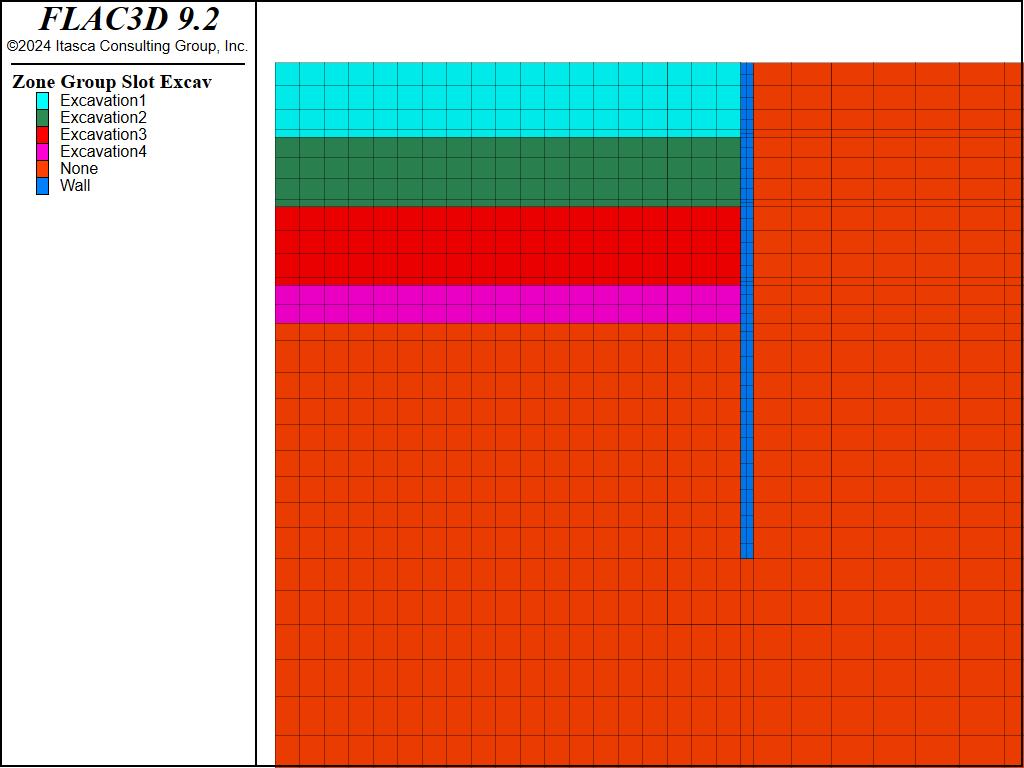
Figure 2: Model grid.
Wall Installation
The diaphragm wall activation (”AnchoredExcavation-2.dat”) is modeled by setting the real density (2.4 Mg/m3) to the wall zones. The diaphragm wall here is modeled by linear elastic solid zones with the properties in Table 3. Joint elements are assigned on the side and base surfaces of the wall to account for the slip and separation between the wall and the soil. The zone joint create by-slot command is used to free the boundary between the wall and the soil and install the joints. The joint stresses are initialized using zone joint initialize-stresses to speed convergence. The joint friction angle is assumed to be 20°. Because the wall is heavier than the surrounding soil, it is expected to move downward. The principal stress magnitudes and orientations are also expected to be adjusted in the soil around the wall. The model state is stored in the file “part-2.sav”.
Plastic-Hardening Model Setup
At this stage (AnchoredExcavation-3.dat), the soil models are changed to the Plastic-Hardening model with the properties in Table 2. Note that herein the Plastic-Hardening model is stress-dependent, which requires input of the initial effective principal stress after the model is assigned the first time. This step can be fulfilled either by zone property commands, or, in this example, by the following FISH function, ini_ph.
fish def ini_ph
loop foreach local z zone.list
if z.model(z) = 'plastic-hardening'
local pp = zone.pp(z)
zone.prop(z,'stress-1-effective') = zone.stress.min(_z) + pp
zone.prop(z,'stress-2-effective') = zone.stress.int(_z) + pp
zone.prop(z,'stress-3-effective') = zone.stress.max(_z) + pp
endif
endloop
end
This FISH function must be executed before the first cycling after the Plastic-Hardening model is assigned. Note that two parameters, constant-alpha (\(\alpha\)) and stiffness-cap-hardening (\(H_c\)), are calculated internally in this example. Users are required to check the validation of these two parameters (see Volumetric Cap Criterion and Flow Rule in the Plastic-Hardening Model definition) [ZC: please check link previous is going to correct place] before proceeding to the next stages. After equilibrium, the model state is stored in “part-3.sav”.
|
|
|
|---|---|---|
Layer 1 |
1.87 |
1.07×105 |
Layer 2 |
3.23 |
6.69×104 |
Dewatering
For the dewatering stage (”AnchoredExcavation-4.dat”), it is assumed, for simplicity, that the water level is dropped instantaneously within the excavation region. The displacements in the model are initialized to zero to monitor the displacement change that only occurs due to the dewatering.
When imposing a change in pore pressure, the total stress must be adjusted to account for this change. This is done using the effective keyword in the zone gridpoint,pore-pressure command used to modify pore pressure.
Check that this adjustment to total stress has been made by plotting effective stresses before and after these commands are issued: the effective stresses are unchanged in the model when the instantaneous pore pressure is imposed.
This dewatering procedure is repeated five times to account for somewhat gradual dewatering. The final pore pressure distribution is shown in Figure Figure #anchored-pp04_2d. The dewatering-induced displacement is shown in Figure Figure #anchored-ydisp04_2d. This indicates the amount of settlement induced by the dewatering is approximately 3 cm. The model state is saved as “part-4.sav” after all dewatering steps.

Figure 3: Pore pressure distribution following dewatering.
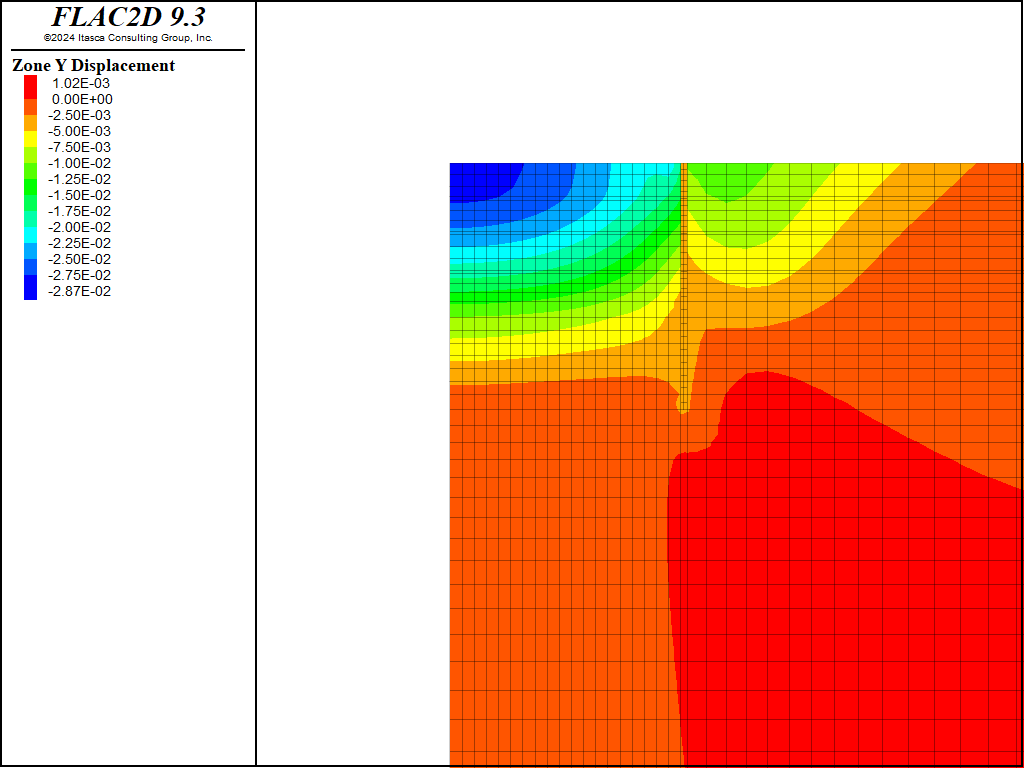
Figure 4: Displacement induced by dewatering.
Excavation and Install Anchors
Displacement is reset to zero at the start of the excavation stage. The changes in pore pressure taking place as a result of excavation are neglected in the analysis. Zones are deleted from the grid to simulate the excavation process for excavation step 1 (4.8 m depth) and the model is cycled to mechanical equilibrium (”AnchoredExcavation-5.dat”). The displacement induced by excavation to a depth of 4.8 m is plotted in Figure Figure #anchored-zdisp05_2d.

Figure 5: Displacement induced by excavation to a depth of 4.8 m.
A cable structural element 19.8 m long is installed at the excavation step 1 level at a dip of 27° (”AnchoredExcavation-6.dat”). The top end of the cable is attached to the wall, and the last 8 m are anchored to the soil (the shear bond strength is 100 MPa). The anchor is prestressed with a force of 901.6 kN, which has been adjusted from the original prestress anchor force (768 kN) by a factor of 2.7/2.3, where 2.7 m is the model out-of-plane width, and 2.3 m is the distance of anchors at row 1 (see specification in Figure 1). The pretensioning is performed using the structure cable apply tension command, whereby (1) the tension is applied to the ungrouted section of the cable; (2) the model is solved to equilibrium; and (3) the tension on the cable is freed to adjust naturally from then on. Figure 6 plots the axial anchor forces after pretensioning of the first row anchor.
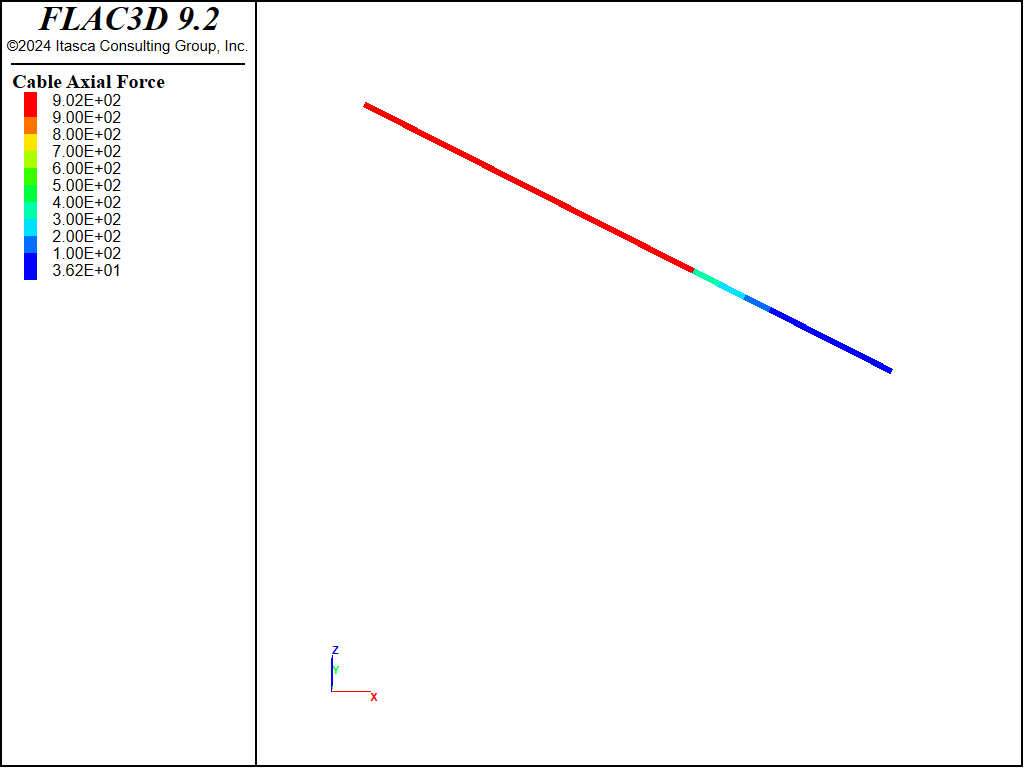
Figure 6: Axial forces in anchor to a depth of 4.8 m after pretensioning.
Zones are then removed from the grid to a depth of 9.3 m, and the model is cycled to mechanical equilibrium (”AnchoredExcavation-7.dat”). The displacement induced by excavation to 9.3 m depth is plotted in Figure 7.

Figure 7: Displacement induced by excavation to a depth of 9.6 m.
The second row of anchors 23.3 m in length are now installed and prestressed with a 945 kN force in the same manner (”AnchoredExcavation-8.dat”). Figure 8 plots the axial anchor forces after pretensioning of anchor row 2.
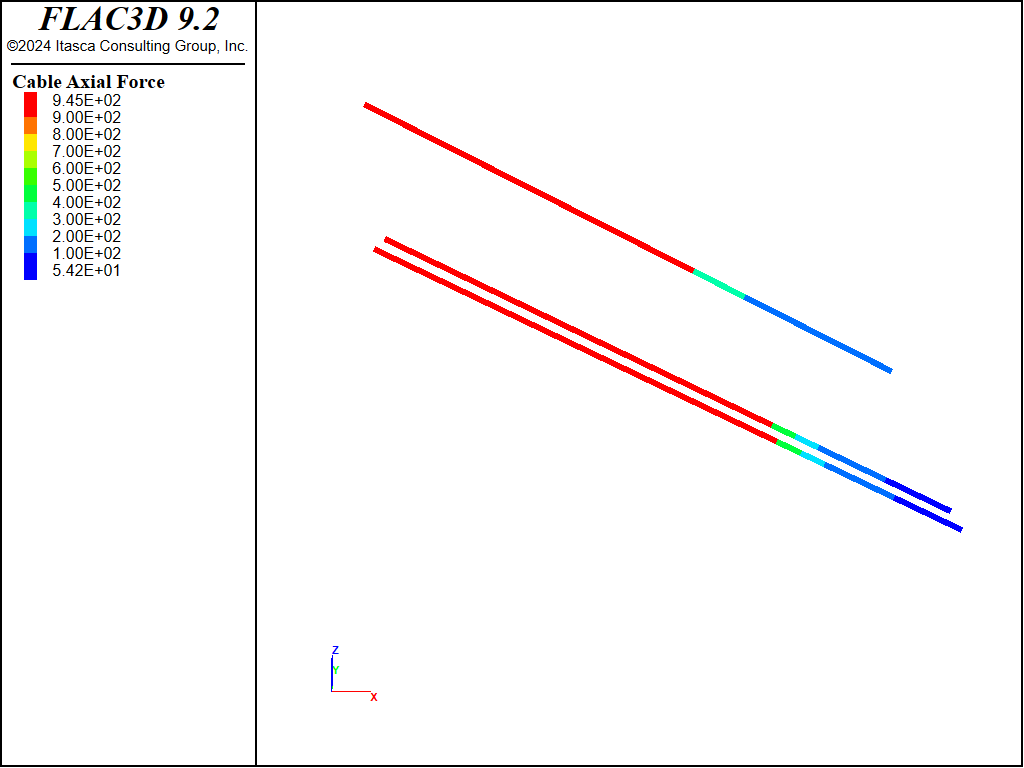
Figure 8: Axial forces in anchor at a depth of 9.6 m after pretensioning.
Zones are then removed for the excavation to 14.35 m depth, and the model is cycled to equilibrium again (”AnchoredExcavation-9.dat”). The displacement induced by excavation to a depth of 14.35 m is plotted in Figure 9.

Figure 9: Displacement induced by excavation to a depth of 14.35 m.
The procedure is repeated once more for the third row of anchors 23.8 m in length with a 980 kN prestress force (”AnchoredExcavation-10.dat”), and excavation to the final depth of 16.8 m (”AnchoredExcavation-11.dat”). After the third row anchors, the axial anchor forces are plotted in Figure 10, and the displacement induced by excavation to a depth of 14.35 m is plotted in Figure 11.

Figure 10: Axial forces in anchor to a depth of 13.45 m after pretensioning.

Figure 11: Displacement induced by excavation to 14.35 m depth.
The calculated wall deflection after the final excavation step is compared to the measured values in Figure 12.

Figure 12: Measured wall deflection and FLAC2D calculation.
The calculated ground settlement behind the wall is presented in Figure 13. It is notable that the calculated ground settlement curve behind the wall is mainly downward, which is consistent with the geotechnical observations.
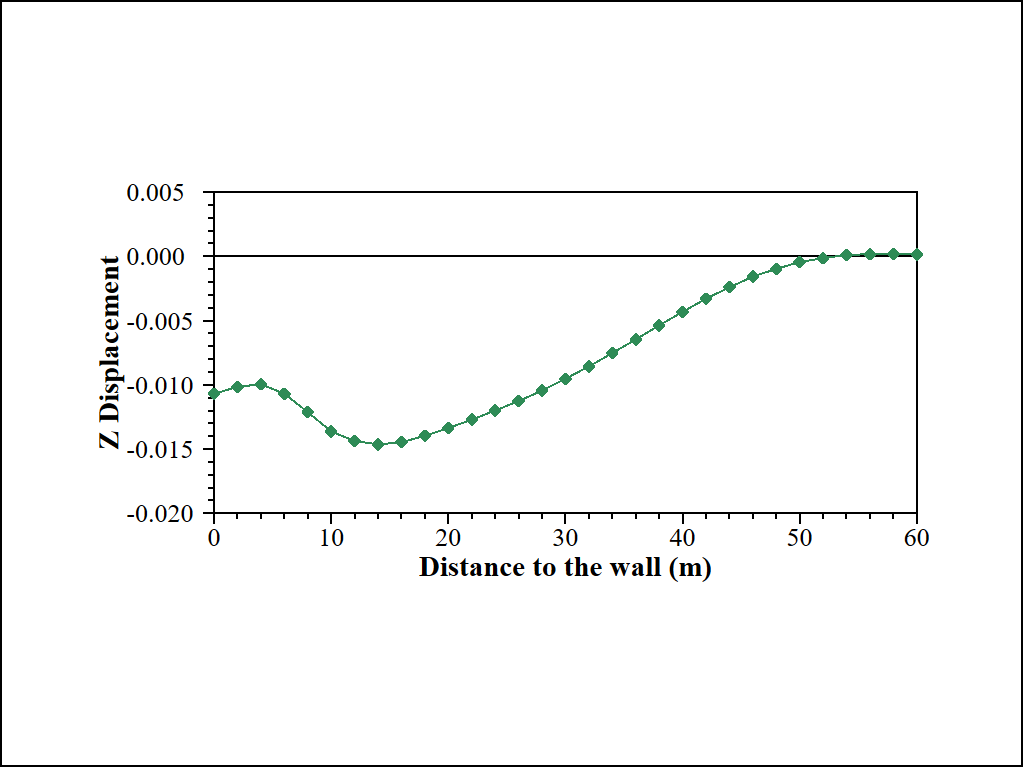
Figure 13: Calculated ground settlement behind the wall.
References
Schweiger, HF. “Results from numerical benchmark exercises in geotechnics,” in 5th European Conference Numerical Methods in Geotechnical Engineering, Vol. 1, pp. 305–314. Presses de l’ENPC/LCPC, Paris (2002).
Data Files
AnchoredExcavation-1.dat
model new
program call 'modelpane.dat'
model title "Anchored Excavation"
; Model creation
model large-strain off
zone face skin ; Name model boundaries
zone separate by-face clear-attach ...
range group 'WallLeft' or 'WallRight' or 'WallBottom' ; Separate wall
; zones ahead of
; time
zone attach by-face ; Attach densified and separated zones
; Install gravity and fluid properties
model gravity 10 ; m/s^2
zone fluid-density 1 ; Mg/m^3
zone gridpoint pore-pressure plane origin 0,-3 normal 0,-1 cutoff
; Assign initial constitutive model and properties
zone cmodel assign mohr-coulomb
zone property young 1.8e5 poisson 0.2 friction 35 dilation 5 ...
cohesion 1 range group 'Layer1' ; kPa
zone property young 3.0e5 poisson 0.2 friction 38 dilation 6 ...
cohesion 1 range group 'Layer2' ; kPa
; Set wet and dry densities
zone property density 1.9 range group 'Dry'
zone property density 2.0 range group 'Wet'
; Roller boundaries on sides, fixed on bottom and right
;zone face apply velocity-normal 0 range group 'South' or 'North'
zone face apply velocity-normal 0 range group 'West2'
zone face apply velocity (0,0) range group 'Bottom2' or 'East2'
; Initialize stress, with different ratios in the layers
zone initialize-stresses ratio [1-math.sin(35*math.degrad)] range group 'Layer1'
zone initialize-stresses ratio [1-math.sin(38*math.degrad)] range group 'Layer2'
;
zone history name 'disp' displacement-x position (30,0)
; Solve
model solve-static
;
model save 'part-1'
AnchoredExcavation-2.dat
model restore 'part-1'
; Reset displacements so we can track changes from last state
zone gridpoint initialize displacement (0,0)
; Separate wall by removing attach conditions
zone attach delete range group 'WallLeft' or 'WallRight' or 'WallBottom'
zone joint configure
zone joint create by-slot 'Default' separate
contact property stiffness-shear 8e6 stiffness-normal 8e6 ...
friction 20.0
zone joint initialize-stresses
;
model save 'part-2'
model solve-static convergence 1
; Change the density and stiffness of the wall
zone cmodel assign elastic range group 'Wall'
zone property density 2.4 young 3.0e7 poisson 0.15 range group 'Wall'
; Relax the convergence criteria in the very stiff wall,
; and in the zones around it at the top.
zone gridpoint initialize ratio-target 1e-2 ...
range position-x 28 33 position-y -4.8 0
zone gridpoint initialize ratio-target 1e-2 range group 'Wall'
;
model solve-static convergence 1
;
model save 'part-2'
AnchoredExcavation-3.dat
model restore 'part-2'
; Reset displacements to track incremental changes from each part.
zone gridpoint initialize displacement (0,0)
; Assign plastic hardening model and properties to layers.
zone cmodel assign plastic-hardening range group 'Wall' not
zone property pressure-reference 100 poisson 0.2 failure-ratio 0.9 ...
cohesion 1
zone property stiffness-50-reference 7.5e4 stiffness-ur-reference 3.0e5 ...
stiffness-oedometer-reference 7.5e4 ...
range group 'Layer2' group 'Wall' not
zone property stiffness-50-reference 4.5e4 stiffness-ur-reference 1.8e5 ...
stiffness-oedometer-reference 4.5e4 ...
range group 'Layer1' group 'Wall' not
zone property exponent 0.55 friction 35 dilation 5 ...
over-consolidation-ratio 1 ...
range group 'Layer1' group 'Wall' not
zone property exponent 0.55 friction 38 dilation 6 ...
over-consolidation-ratio 1 ...
range group 'Layer2' group 'Wall' not
zone property coefficient-normally-consolidation ...
[1-math.sin(35*math.degrad)] ...
range group 'Layer1' group 'Wall' not
zone property coefficient-normally-consolidation ...
[1-math.sin(38*math.degrad)] ...
range group 'Layer2' group 'Wall' not
; Initialize effective stress properties using FISH.
fish operator ini_ph(z)
if z.model(z) = 'plastic-hardening'
local pp = zone.pp(z)
zone.prop(z,'stress-1-effective') = zone.stress.min(z) + pp
zone.prop(z,'stress-2-effective') = zone.stress.int(z) + pp
zone.prop(z,'stress-3-effective') = zone.stress.max(z) + pp
endif
end
[ini_ph(::zone.list)])
; Get to approximate equilibrium
model solve-static convergence 1
;
model save 'part-3'
AnchoredExcavation-4.dat
model restore 'part-3'
; Reset displacements to track incremental changes from each part.
zone gridpoint initialize displacement (0,0)
; Clear pore-pressures in the wall
zone gridpoint initialize pore-pressure 0 range group 'Wall'
; Dewater in 5 steps, gradually lowering the water table
; (keeping effective stress constant)
; First step
zone gridpoint pore-pressure plane origin (0,-6) normal (0,1) ...
effective cutoff range group 'Left' position-y -30 0
zone property density 1.9 range group 'Left' position-y -6 0
model solve-static convergence 1
; Second step
zone gridpoint pore-pressure plane origin (0,-9) normal (0,1) ...
effective cutoff range group 'Left' position-y -30 0
zone property density 1.9 range group 'Left' position-y -9 0
model solve-static convergence 1
; Third step
zone gridpoint pore-pressure plane origin (0,-12) normal (0,1) ...
effective cutoff range group 'Left' position-y -30 0
zone property density 1.9 range group 'Left' position-y -12 0
model solve-static convergence 1
; Fourth step
zone gridpoint pore-pressure plane origin (0,-15) normal (0,1) ...
effective cutoff range group 'Left' position-y -30 0
zone property density 1.9 range group 'Left' position-y -15 0
model solve-static convergence 1
; Fifth step
zone gridpoint pore-pressure plane origin (0,-17.9) normal (0,1) ...
effective cutoff range group 'Left' position-y -30 0
zone property density 1.9 range group 'Left' position-y -17.9 0
model solve-static convergence 1
;
;
model save 'part-4'
AnchoredExcavation-5.dat
; excavate to -4.80 m
model restore 'part-4'
; Reset displacements to track incremental changes from each part.
zone gridpoint initialize displacement (0,0)
; Delete zones in excavation, solve, and save.
zone delete range group 'Excavation1'
zone history name 'disp2' displacement-x position (30,0)
model solve-static convergence 1
model save 'part-5'
AnchoredExcavation-6.dat
model restore 'part-5'
; This creates geometry representing the cable layout,
; could also just be imported from CAD.
program call 'cablegeom' suppress
; Create and set properties for grouted and ungrouted first cable set
structure cable import from-geometry 'cable' ...
group 'free1' id 1 range group 'free1'
structure cable import from-geometry 'cable' ...
group 'grout1' segments 8 id 1 range group 'grout1'
structure cable property young 2.1e8 cross-sectional-area 0.00176 ...
spacing 2.3
; give stiffness and strength to the grout
structure cable property grout-stiffness 4e6 grout-cohesion 1e5 ...
range group 'grout1'
; Connect first node of cable with the zone rigidly
structure link delete range group 'free1' position-x 30.4
structure link create target zone range group 'free1' position-x 30.4
; Pretension the cable, adjust to equilibrium, then free
; the cable tension to adjust naturally.
structure cable apply tension value 901.6 range group 'free1'
model solve convergence 1
structure cable apply tension active off
;
model save 'part-6'
AnchoredExcavation-7.dat
; excavate to -9.30 m
model restore 'part-6'
;
zone delete range group 'Excavation2'
model solve convergence 1
;
model save 'part-7'
AnchoredExcavation-8.dat
model restore 'part-7'
; Create and set properties for grouted and ungrouted second cable set
structure cable import from-geometry 'cable' ...
group 'free2' id 2 range group 'free2'
structure cable import from-geometry 'cable' ...
group 'grout2' segments 8 id 2 range group 'grout2'
structure cable property young 2.1e8 cross-sectional-area 0.0015 ...
spacing 1.35 range group 'free2' or 'grout2'
structure cable property grout-stiffness 4e6 grout-cohesion 1e5 ...
range group 'grout2'
; Connect first node of cable with the zone rigidly
structure link delete range group 'free2' position-x 30.4
structure link create target zone range group 'free2' position-x 30.4
; Pretension the cable, adjust to equilibrium,
; then free the cable tension to adjust naturally.
structure cable apply tension value 945 range group 'free2'
model solve convergence 1
structure cable apply tension active off
;
model save 'part-8'
AnchoredExcavation-9.dat
; excavate to -14.35 m
model restore 'part-8'
;
zone delete range group 'Excavation3'
model solve convergence 1
;
model save 'part-9'
AnchoredExcavation-10.dat
model restore 'part-9'
; Create and set properties for grouted and ungrouted second cable set
structure cable import from-geometry 'cable' ...
group 'free3' id 3 range group 'free3'
structure cable import from-geometry 'cable' ...
group 'grout3' segments 8 id 3 range group 'grout3'
structure cable property young 2.1e8 cross-sectional-area 0.0015 ...
spacing 1.35 range group 'free3' or 'grout3'
structure cable property grout-stiffness 4e6 grout-cohesion 1e5 ...
range group 'grout3'
; Connect first node of cable with the zone rigidly
structure link delete range group 'free3' position-x 30.4
structure link create target zone range group 'free3' position-x 30.4
; Pretension the cable, adjust to equilibrium,
; then free the cable tension to adjust naturally.
structure cable apply tension value 980 range group 'free3'
model solve convergence 1
structure cable apply tension active off
;
model save 'part-10'
AnchoredExcavation-11.dat
; excavate to -16.8 m
model restore 'part-10'
;
zone delete range group 'Excavation4'
model solve convergence 1
;
model save 'part-11'
Endnote
| Was this helpful? ... | Itasca Software © 2024, Itasca | Updated: Dec 19, 2024 |
